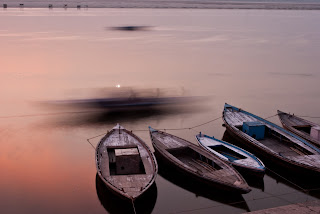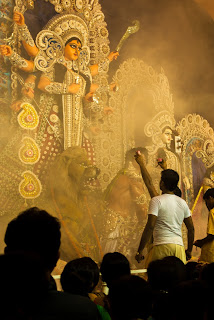In my last post I talked about – photography is all about
chasing light. That does not mean, we need to run after street lights, tails
lamps etc. Chasing light for us photographers means understanding light.
Hold on! You said you will make us a better photographer and
now you are turning us into physicists.
Not exactly, we don’t need to understand photon and stuff. We just to understand the basic and how it effects a photograph.
Not exactly, we don’t need to understand photon and stuff. We just to understand the basic and how it effects a photograph.
So let’s go back to school and recap how we see things.
Light from a source, reflected by an object is captured by our eye.
Light from a source, reflected by an object is captured by our eye.
So let’s first understand the major factors to consider and
then we will see through some examples to put theory into practical
perspective.
Source – Natural vs. Artificial light- For us natural
light source is sun during the day and moon at night. Artificial light is
anything from candles to bulbs to external flashes.
Understanding the source is important as it will help you determine the overall mood and other aspects of a photograph. And there is no good or bad light source. If you ask a landscape photographer, he will tell you natural light is the best. If you ask the same question to a studio portrait photographer, he will swear by artificial light.
Understanding the source is important as it will help you determine the overall mood and other aspects of a photograph. And there is no good or bad light source. If you ask a landscape photographer, he will tell you natural light is the best. If you ask the same question to a studio portrait photographer, he will swear by artificial light.
Direction of light- The second thing to consider is
the direction of light. It simply means at what angle the light is being
reflected towards the camera.
Color Temperature – What! Colors don’t have
temperature. I agree. But just to remember there are warm colors and cool
colors. Just imagine a color and if it makes you feel cold it is the cold color
and vice versa. Imagine color blue and immediately your mind perceives sky,
water bodies and make your feel cold and relaxed. Whereas shades of red/orange
will make you feel warm because your mind associate those colors with warm
things like fire or sun.
Enough of text, now let’s get to examples and dissect them
to understand lighting in each situation.
(Disclaimer – I shoot exclusively with available light, if you are looking for advice on external flashes and lighting systems, I am not the correct guy to follow)
(Disclaimer – I shoot exclusively with available light, if you are looking for advice on external flashes and lighting systems, I am not the correct guy to follow)
 |
| Natural Light |
Here you can see that the light is natural (from sun), being blocked by something which is allowing partial light to fall through, coming from top left direction.
 |
| Artificial Light |
Here the light source is in front (candle), with light being reflected by the metallic surface.
 |
| Light Direction One |
Here the light source is again in the front.
Here the light source is on top with beamed light falling on the subject.
Here the light source is coming from top right, as you can make out from the direction of shadows. The intensity of light is also hard and close to subject, which you can make out as the bell on right got more light than the left one.
Leaving three four images for you guys to dissect in comment section. Give it a try will be a good exercise.
What is Photography Blog Post - Click Here
Learn to see like camera Blog Post - Click Here
 |
| Boats |
 |
| Ruins |
 |
| Durga Puja |
 | |||||||||||
| Golden Temple |




No comments:
Post a Comment